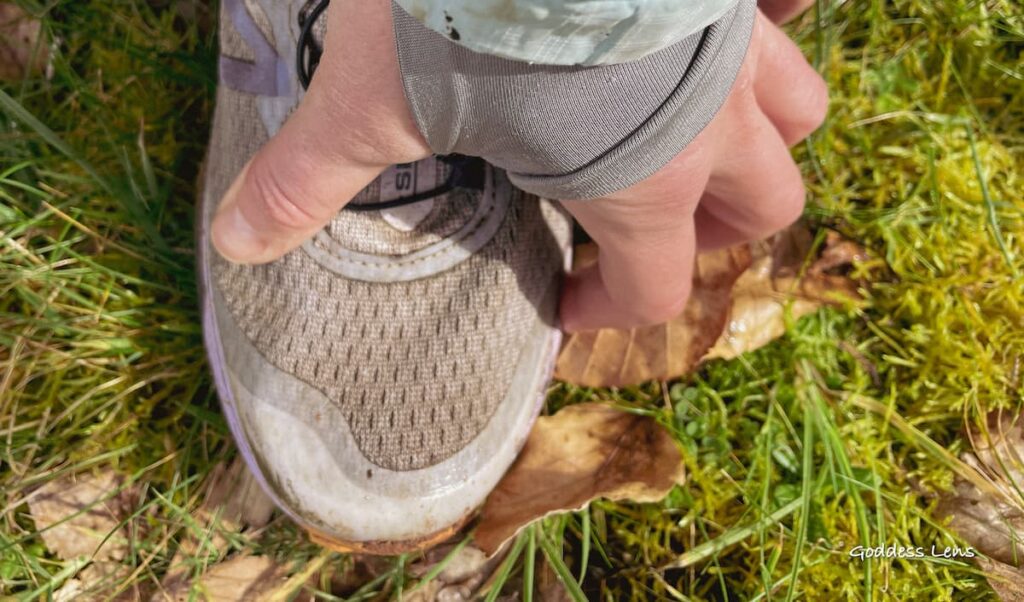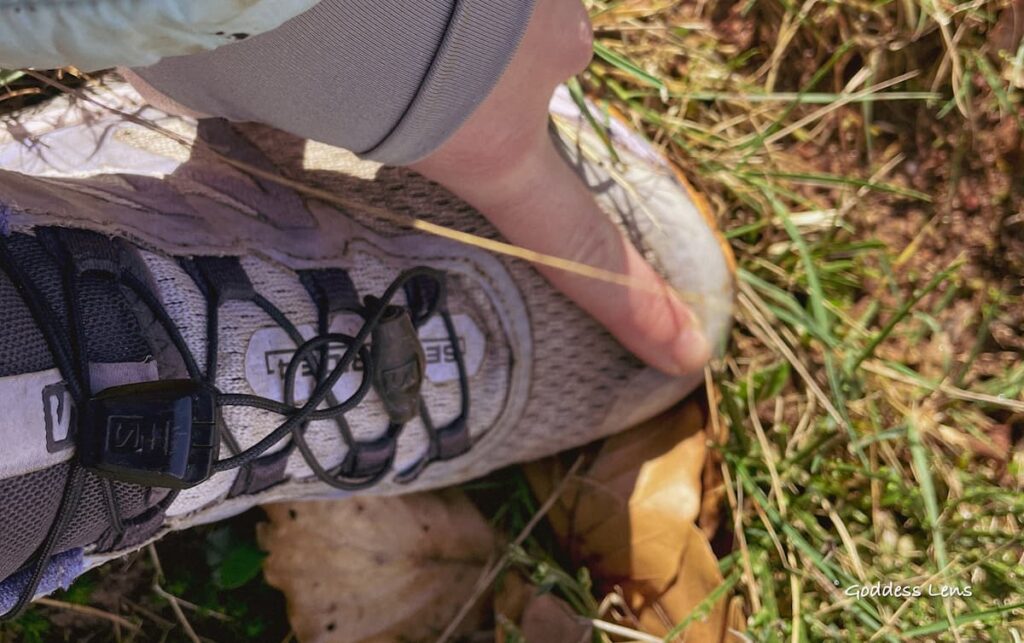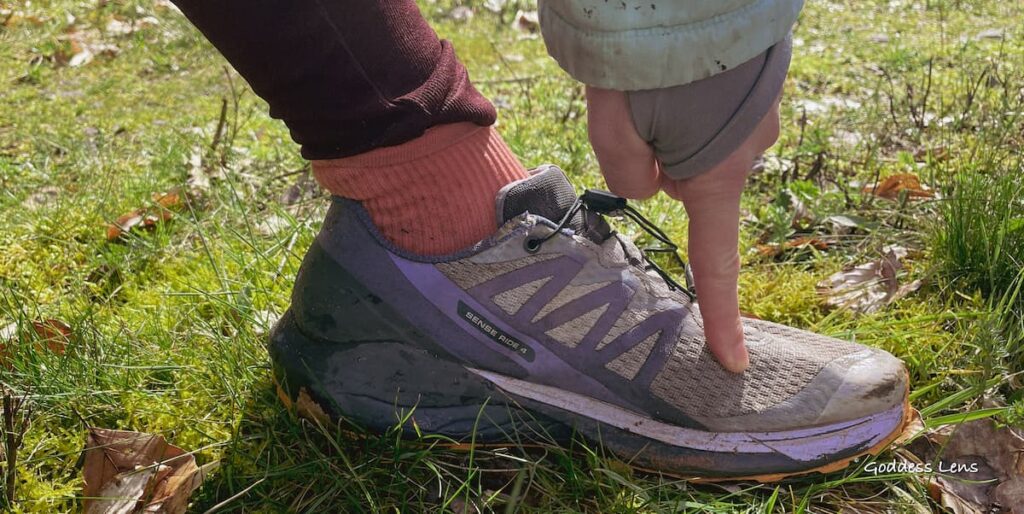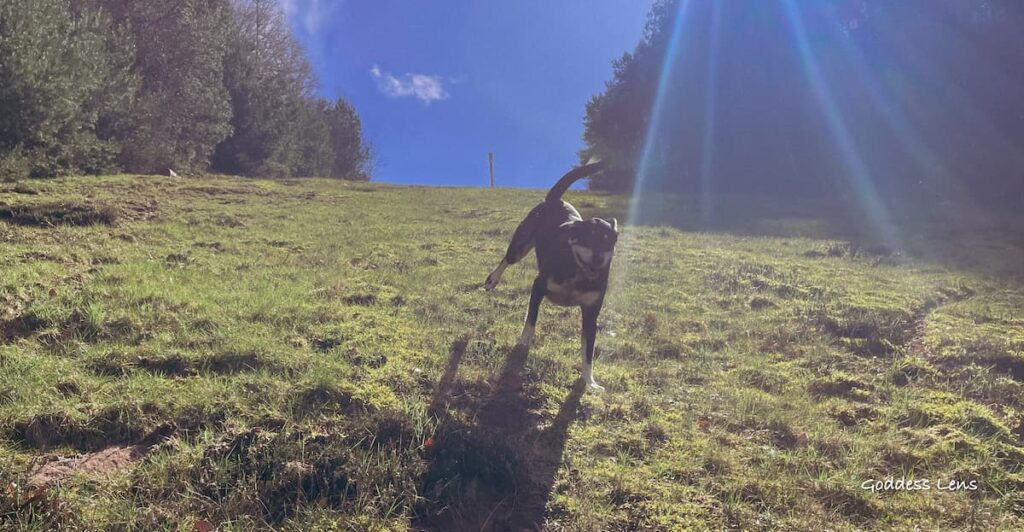

As a physical therapist and someone who loves exploring the great outdoors, I know firsthand the joy and beauty of hiking. #freedom
However, as much as I enjoy the uphill climb, I absolutely dread hiking downhill. It’s not just about the effort, but also the toll it can take on our toes.
That’s why I’ve put together this guide on how to protect your toes when hiking downhill, so you can still tackle those epic trails, without experiencing discomfort or pain that can lead to other problems like blisters, sore calves (from compensating) or the dreaded plantar fasciitis.
I’ll share my personal experience, pros and cons, and expert recommendations for the better hiking.
Read until the end for all the tips and tricks to have a pain-free hiking experience, even on the murderous downhills.
What You Will Learn
TL:DR How to Protect Toes When Hiking Downhill
Quick summary of how to protect your toes when hiking downhill:
- Wear proper hiking shoes or boots (long treks require one size up from normal)
- Use the “heel lock” and tighten laces on the downhills
- Keep your toenails in good shape
- Utililize trekking poles to off-load the pressure
- Adapt and modify the trail as needed with zigzagging
- Blister protection
Best Practice Blister Prevention:
➡️ Tip #1: Avoid 100% cotton socks.
➡️ Tip #2: Break in and test your shoes & socks before a big hike.
➡️ Tip #3: Consider taking compeeds, moleskin, toe caps, toe socks or sock liners if you’re really prone to blisters.
(No perfect sock will protect your toes if you don’t spend time adapting to the hiking you want to do.)
The best hiking socks will have a variety of features to address breathability, weight, materials, fit, and cushioning – and I know which ones to look for.
Why do My Toes Hurt When Hiking Downhill?
There are several reasons why toes hurt when hiking downhill. One of the main culprits is the repeated impact of the foot hitting the ground, which can cause stress on the toes.
When going downhill, the foot often slides forward in the shoe, which can cause the toes to hit the front of the shoe and become compressed.

This can lead to pain, discomfort, and even blisters or even a bruised toenail from hiking. Foot pain and foot health in general can really make a huge difference in quality of life, weight management and wellness.
Additionally, when hiking downhill, the body naturally leans forward, putting MORE WEIGHT on the toes. This can increase the pressure and impact on the toes, leading to pain and discomfort.
Here is a table summarizing the main causes of toe pain during hiking downhill:
| CAUSE | DESCRIPTION |
|---|---|
| IMPROPER FOOTWEAR | 🥾 Shoes that are too tight or too narrow, or lack sufficient toe box space. |
| IMPROPER SOCKS | 🧦 Socks that retain moisture or cause friction against the toes. |
| TOENAIL ISSUES | 💅 Long toenails that press against the front of the shoes. |
| OVERUSE | 😰 Repetitive pressure on the toes from steep inclines or descents and you simply are not adapted to it. |
| TRAUMA | 💥 Stubbing or jamming toes against rocks, roots, or other obstacles. |
| DEGENERATIVE PROBLEMS | 👨🏼💼 Sometimes, we just age. Things like osteoarthritis, bunions or gout can cause sensitivity and must be managed medically or with physical therapy and adaptation. |
Understanding the causes of toe pain can help you take appropriate steps to prevent it during hiking.
Protip:
Get a hiking shoe or hiking boot that is at least 1/2 size too big to allow for swelling of feet on the trails. But don’t go overboard because then your foot will slide around too much on the downhills.
Other factors that can contribute to toe pain when hiking downhill include improperly fitting footwear, lack of cushioning or support in the shoe, and overuse or fatigue of the foot muscles.
Downhills are the Wurst! (pun)
It’s essential to address this issue to prevent further discomfort or injury before it becomes a repeat problem. It’s generally best to address body problems immediately when they arise before they set in and become part of our concept.
My feet hurt when hiking downhill when the incline is too steep for my level of adaptation. And when my feet hurt, it’s usually the big toe that takes the brunt.
The Big Toe is the Biggest Importance

The big toe plays a crucial role in the gait cycle, which is the sequence of movements involved in walking or running. It helps to stabilize the foot during the stance phase of the gait cycle, when the foot is in contact with the ground.
The big toe also helps to push off the ground during the toe-off phase of the gait cycle, which propels the body forward.
90% of Your Body Weight Goes Through Big Toe
Any dysfunction or pain in the big toe can therefore have a significant impact on the overall gait pattern and can lead to compensations and pain in other parts of the body.
As such, it is important to address any toe pain or dysfunction promptly to prevent further complications.
In the next section, I will provide some tips on how to prevent and alleviate toe pain during downhill hikes.
How to prevent toe pain while hiking downhill?
You know what they say about an Ounce of Prevention???
It’s the key when it comes to avoiding toe pain while hiking downhill.
Here are some tips on how to prevent toes from hurting when hiking downhill:
1. Break in and Wear Proper Hiking Shoes:
Wearing proper hiking shoes is crucial for preventing toe pain. Choose shoes that fit well, have enough space in the toe box for your toes to move around, and have good arch support.
NEVER use brand new shoes or boots on a long hike.
2. Trim Your Toenails:
Make sure your toenails are trimmed before your hike. Long toenails can put pressure on your toes and cause pain and discomfort.
3. Use Moisture Wicking or Toe Socks:
High quality hiking socks can help prevent friction and blisters on your toes. They can also provide extra cushioning and protection for your toes. Some people even find using toe socks for hiking to be very helpful.
➡️ Buy my favorite women’s socks or men’s socks. 🔥 🔥 Read my review of the best blister kits for hiking.
4. Use Trekking Poles:
Using trekking poles can help reduce the impact on your feet and toes while hiking downhill.
They can also provide extra stability and support, which can help prevent toe pain.
📚 Read my detailed review of the best budget trekking poles on the market.
5. Take Frequent Breaks:
Taking frequent breaks and stretching your toes can help prevent toe pain. Take breaks every hour or so to give your feet a rest and stretch your toes.
By following these tips, you can help prevent toe pain while hiking downhill and enjoy your outdoor adventures pain-free.
6. Use Toe Caps:
If you have extremely sensitive toes, you should consider using silicone toe caps that provdie extra cushion to your toes.
Still hurts?
S-Curve or Zigzag Downhill
I always used this when doing cross country in high school. Sometimes it’s so hard to reduce the impact forces, so you change the angle to reduce the steepness.

Another way to prevent toe pain and how to protect your feet when hiking is to use a technique called sidestepping or zigzagging.
Sidestepping Method
Hiking Downhill Tips
Instead of walking straight down the slope, try taking short steps while facing the slope sideways. This helps to reduce the impact on your toes and shift the weight to your other leg muscles.
To sidestep downhill, start by facing sideways towards the slope with your feet perpendicular to the hill.
Take a small step downhill with your left foot, then bring your right foot down to meet it. Repeat this pattern, taking small steps while keeping your feet perpendicular to the slope.
This can help alleviate the pressure on your toes and reduce the risk of injury.
⌚ Explore more with confidence with our top-rated hiking and navigational watch!
If you need a reliable GPS watch for your trip, then my personal recommendation is to choose Garmin Fenix 7X Sapphire Watch, an award winning navigation watch with advanced features like GPS tracking, altimeter and long battery life. Plus with durable and waterproof design, you can take on any weather.
Buy a watch HEREZigzag Technique
Another technique to prevent toe pain hiking downhill is to zigzag down the slope by taking diagonal steps instead of walking straight down. This technique is especially useful on steep slopes where sidestepping may be difficult.
Keep in mind that both of these techniques require practice and may take some time to master. Start with small hills and work your way up to steeper terrain.
With consistent practice, you can significantly reduce your risk of developing toe pain during downhill hiking.
FAQ
How do I stop my toes from hurting when hiking downhill?
To prevent toe pain during hiking, you can follow some simple tips such as wearing appropriate footwear with a wide toe box, trimming your toenails regularly, wearing moisture-wicking socks, using toe protectors, and taking frequent breaks to stretch and wiggle your toes.
Why do my toes hurt while hiking?
Toe pain during hiking can be caused by several factors such as ill-fitting footwear, long toenails, friction, pressure, and impact.
Additionally, hiking downhill can put extra strain on your toes, which can exacerbate any existing pain or discomfort. By taking preventive measures and using proper techniques, you can reduce your risk of developing toe pain during hiking.
Losing a toenail from hiking is not abnormal. So don’t be worried, but find out where you are going wrong in the fit of your shoe.
We hope this guide filled with interesting information about how to protect toes when hiking downhill has given you the proper information to plan your next adventure.
More Resources
Discover gear that elevates your outdoor adventures. As a physical therapist, I’ve curated product comparisons to enhance safety and enjoyment, perfect for beginners or those with weary knees.
Physical Therapist Curated Gear Guides for Hikers & Skiers
- 🧎 Make your knees feel better while hiking and walking: Best Knee Braces for Hiking
- 🌳Make the downhills stop hurting and hike with more confidence Best Trekking Poles Review
- ⌚ Never get lost on the trail and navigate the wilderness safely with My Review of the Best GPS Watches for Hiking
- ❄️ Go hiking on uneven terrain safely: The Best Hiking Boots with Ankle Support
- Don’t get lost in the backcountry with : My Review of the Best 2 Way Radios for the Mountains
My Guides to Bucketlist Hikes in Europe
(That I’ve personally done and loved.)
Like it? Share it to promote sustainable tourism.

Author profile: Morgan Fielder is a Doctor of Physical Therapy and passionate hiker who believes in exploring the world on foot with good food. Follow her journey as she shares science-based hiking tips and advocates for sustainable tourism.
